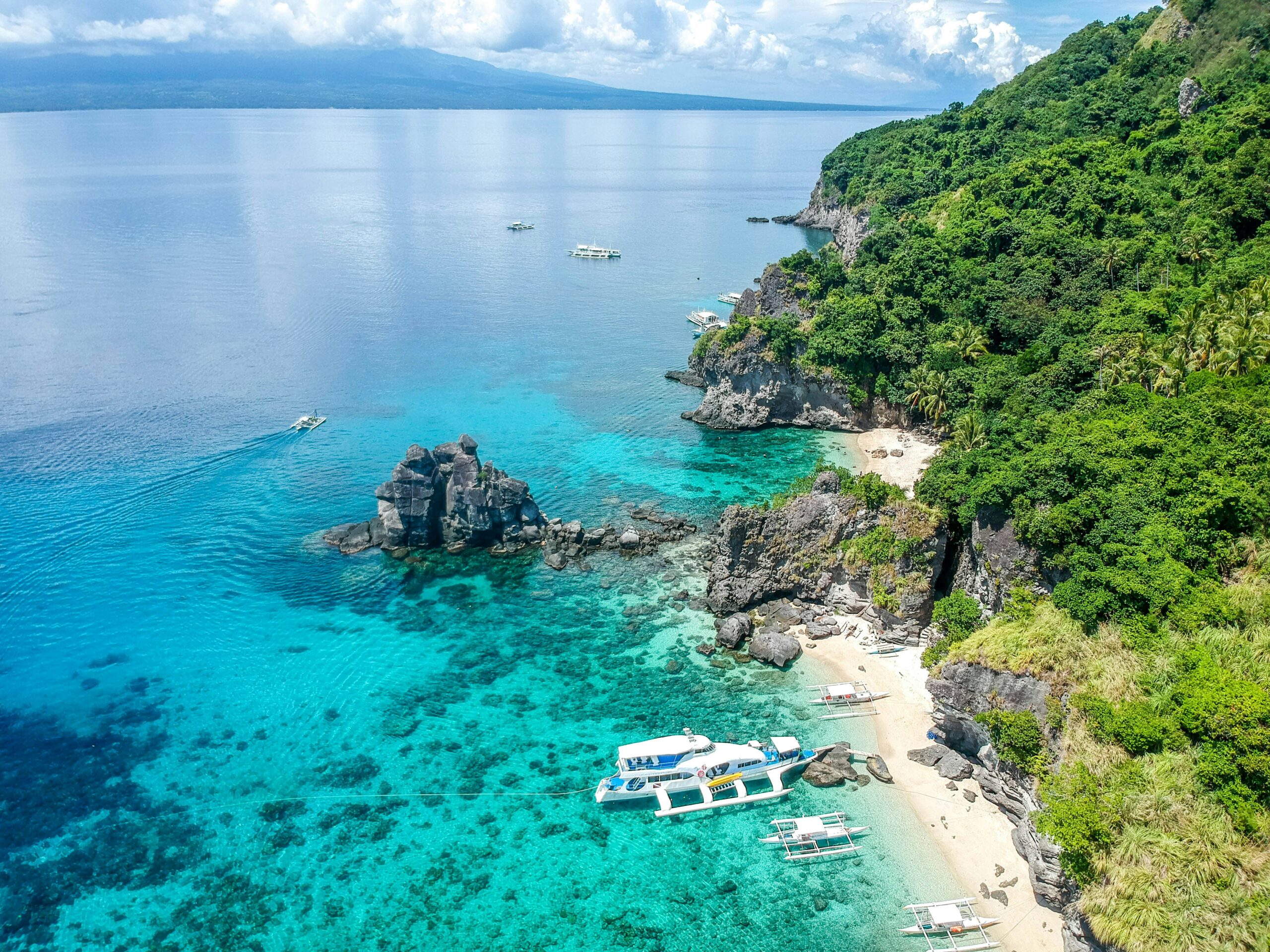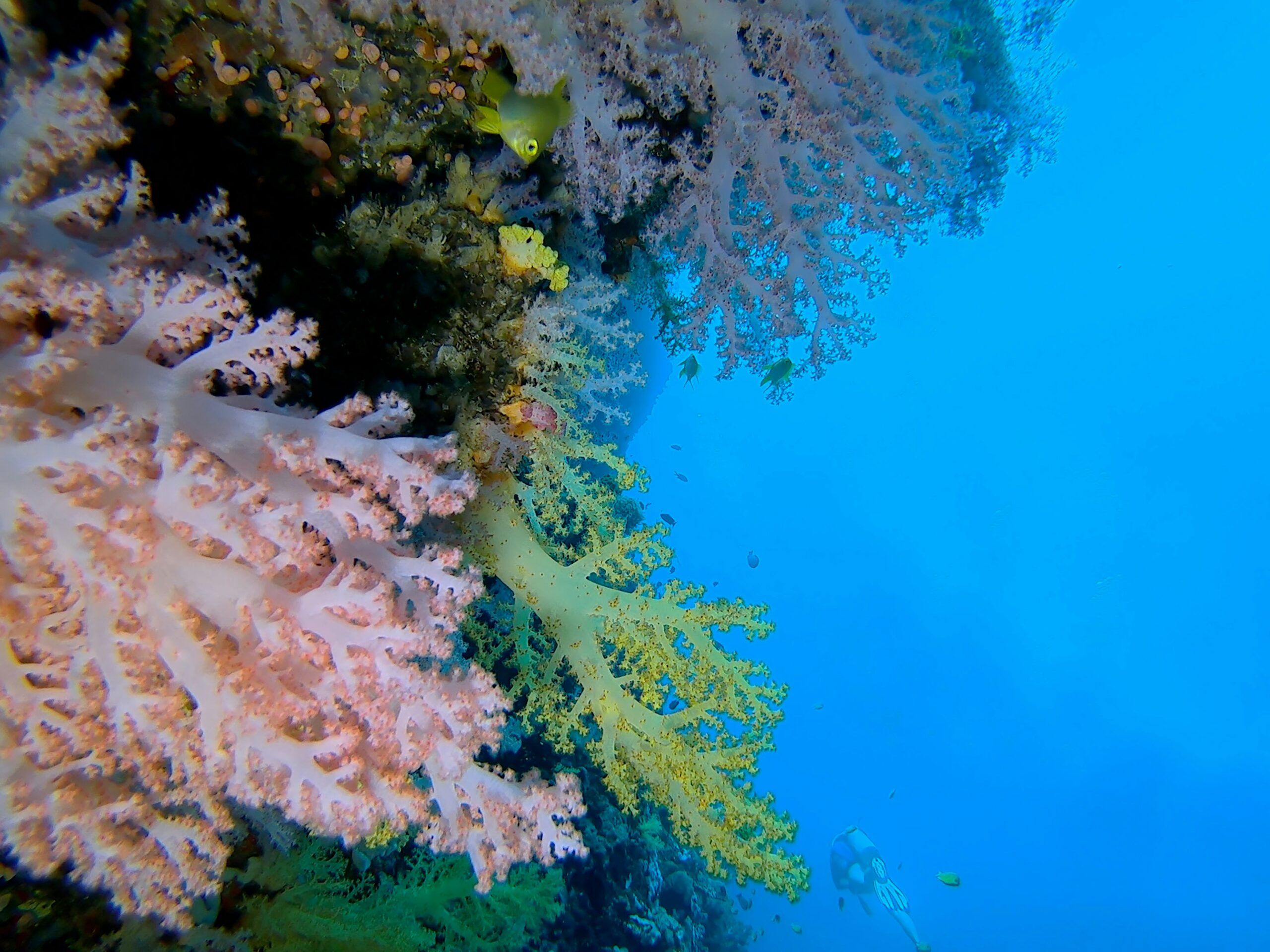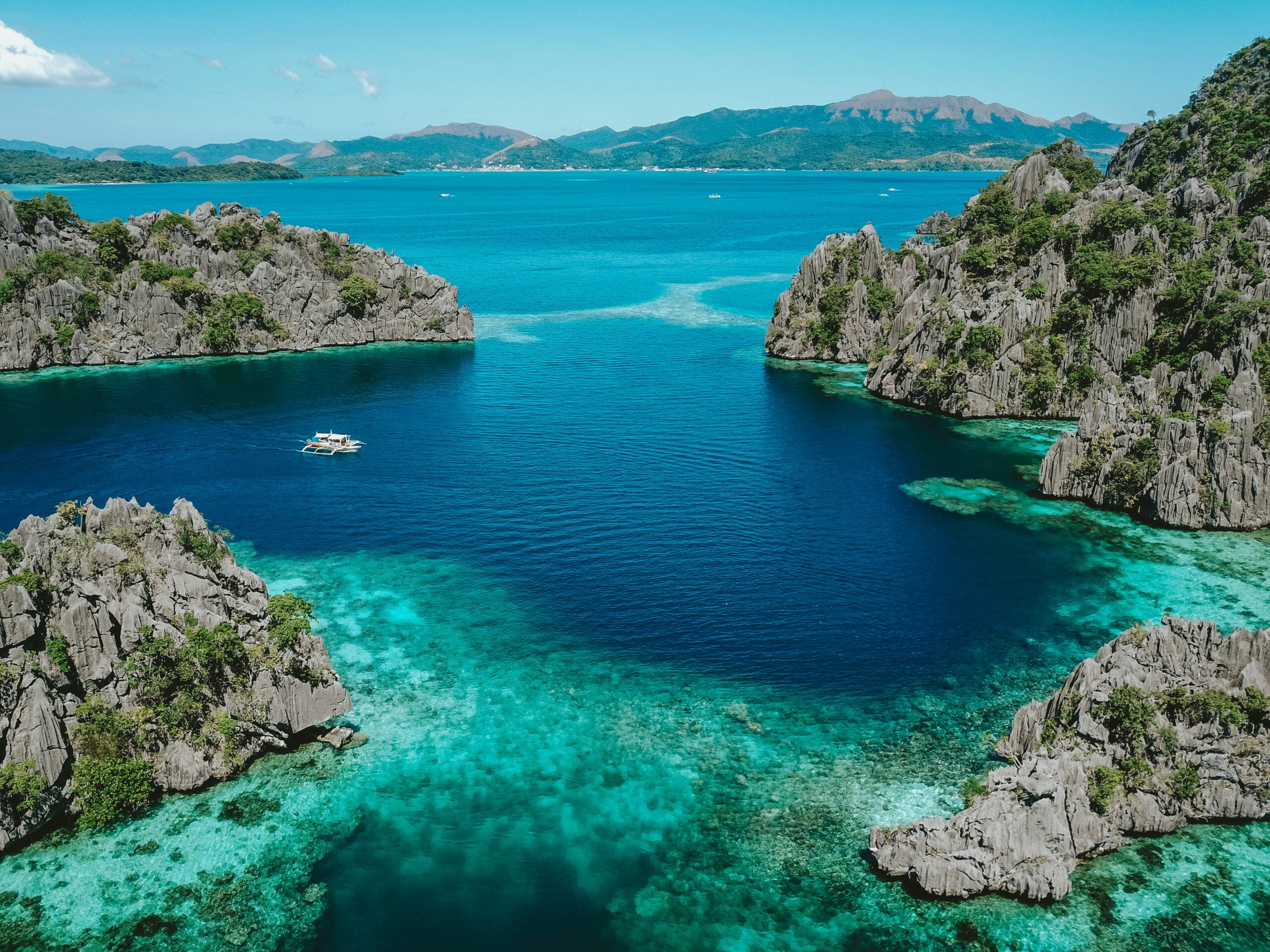The Philippines serves as a paradise for those passionate about underwater exploration. Visitors to the islands will encounter everything from vibrant coral reefs to submerged wartime wrecks. This guide provides essential information to help you find the best scuba diving and snorkeling experiences in the Philippines.
Before you travel to the Philippines, please note that all visitors must complete an electronic travel application. This online process is straightforward, so make sure to finish it before your arrival.
With those details taken care of, let’s dive into the specifics of each scuba diving destination. We will explore how to access these sites, associated costs, available accommodations, and more.
1. Tubbataha Reefs Natural Park
Why Visit:
Tubbataha Reefs Natural Park is a dream come true for dedicated divers. This remote atoll is characterized by crystal-clear waters and an astonishing variety of marine life, including sharks, turtles, and countless fish species. Its isolation ensures that the underwater ecosystem remains pristine and untarnished.
Getting There:
Start your journey with a flight to Puerto Princesa in Palawan. Afterward, you’ll take a 10-hour boat ride, which is the only route to reach these secluded reefs.
Costs:
A liveaboard trip lasting 5 to 7 days generally costs between $1,000 and $3,000. This package typically includes meals, multiple daily dives, and accommodations on board.
Stay Duration:
Most divers prefer a 5 to 7-day trip to thoroughly enjoy the diverse dive sites available in the area.
Accommodation:
Your liveaboard vessel will serve as your floating hotel, with amenities varying based on your budget.
2. Apo Island, Negros Oriental

Why Visit:
Apo Island is a snorkeling paradise, celebrated for its gracious sea turtles and vibrant coral reefs. The local community’s commitment to marine conservation has resulted in a flourishing underwater ecosystem.
Getting There:
Fly to Dumaguete City, and then take a short drive to Malatapay Market. You’ll finish your journey with a 30-minute boat ride to Apo Island.
Costs:
Boat rental from Malatapay to Apo Island costs approximately $20-$30. Accommodations on the island vary, catering to all budget ranges.
Stay Duration:
Spending 2 to 3 days here allows you to fully enjoy the peaceful island atmosphere and explore its underwater wonders.
Accommodation:
Options include homestays, guesthouses, and small resorts, with prices ranging from budget-friendly to mid-range luxury.
3. Balicasag Island, Bohol

Why Visit:
Balicasag Island is renowned for its rich marine biodiversity. The surrounding waters serve as a sanctuary for schools of jackfish, barracudas, and a dazzling array of smaller reef fish. The shallow coral gardens are perfect for snorkelers, while the deeper zones provide excitement for advanced divers.
Getting There:
After arriving at Tagbilaran, Bohol, a short drive followed by a brief boat ride from Alona Beach will take you to Balicasag Island.
Costs:
The boat trip is priced between $15-$25. Accommodations on Balicasag are simple yet comfortable, ranging from $30-$60 per night.
Stay Duration:
While day trips are popular, a 1–2 night stay enhances the diving experience.
Accommodation:
Options are limited, so it is advisable to book in advance.
4. Coron, Palawan

Why Visit:
Coron stands out for its stunning coral reefs and intriguing history. Famous for its World War II shipwrecks, these have transformed into thriving artificial reefs. The clear waters and rich marine life make Coron a must-visit for both snorkelers and divers.
Getting There:
You can take direct flights to Busuanga Airport and follow with a brief van ride to reach Coron town.
Costs:
Van transfers typically cost around $5-$10, while various island-hopping and snorkeling tours range from $20-$50.
Stay Duration:
Consider spending 3 to 5 days to fully explore the numerous dive sites and bask in the island’s natural beauty.
Accommodation:
Coron offers a variety of lodging options, from budget-friendly hostels to more upscale hotels.
5. Anilao, Batangas
Why Visit:
Anilao is a hotspot for macro photography and muck diving enthusiasts. Its volcanic landscape has created a unique underwater environment teeming with various small and rare marine species.
Getting There:
Just a short drive from Manila, Anilao is the easiest dive destination on this list to access.
Costs:
Day trips for diving, including equipment rental and boat fees, typically cost around $100.
Stay Duration:
While it’s popular for quick weekend getaways, a 3-4 day stay is ideal for diving enthusiasts.
General Tips for Your Diving Trip
– Best Time to Visit: The best time for diving and snorkeling in the Philippines is during the dry season, from November to May.
– Equipment: Most dive centers provide gear rentals. Always check your equipment to ensure safety.
– Environmental Responsibility: Be a considerate visitor by avoiding disturbances to marine life and coral formations. Keep the environment clean by disposing of your trash properly and avoiding littering. If you smoke, do not leave your cigarette butts on the beach.
– Health Precautions: Ensure you are medically fit for diving and familiarize yourself with safety procedures. It may be wise to obtain diving insurance.
Conclusion:
The Philippines is a treasure trove for underwater adventurers, with each destination revealing a unique aspect of the country’s stunning aquatic landscapes.
Plan your trip with these practical tips in mind, and you’ll be ready to embark on a journey through the captivating underwater realms of the Philippines.
Your trip’s success will depend on thoughtful preparation, respect for the marine environment, and an eagerness to explore the diving spots of the Philippines.



